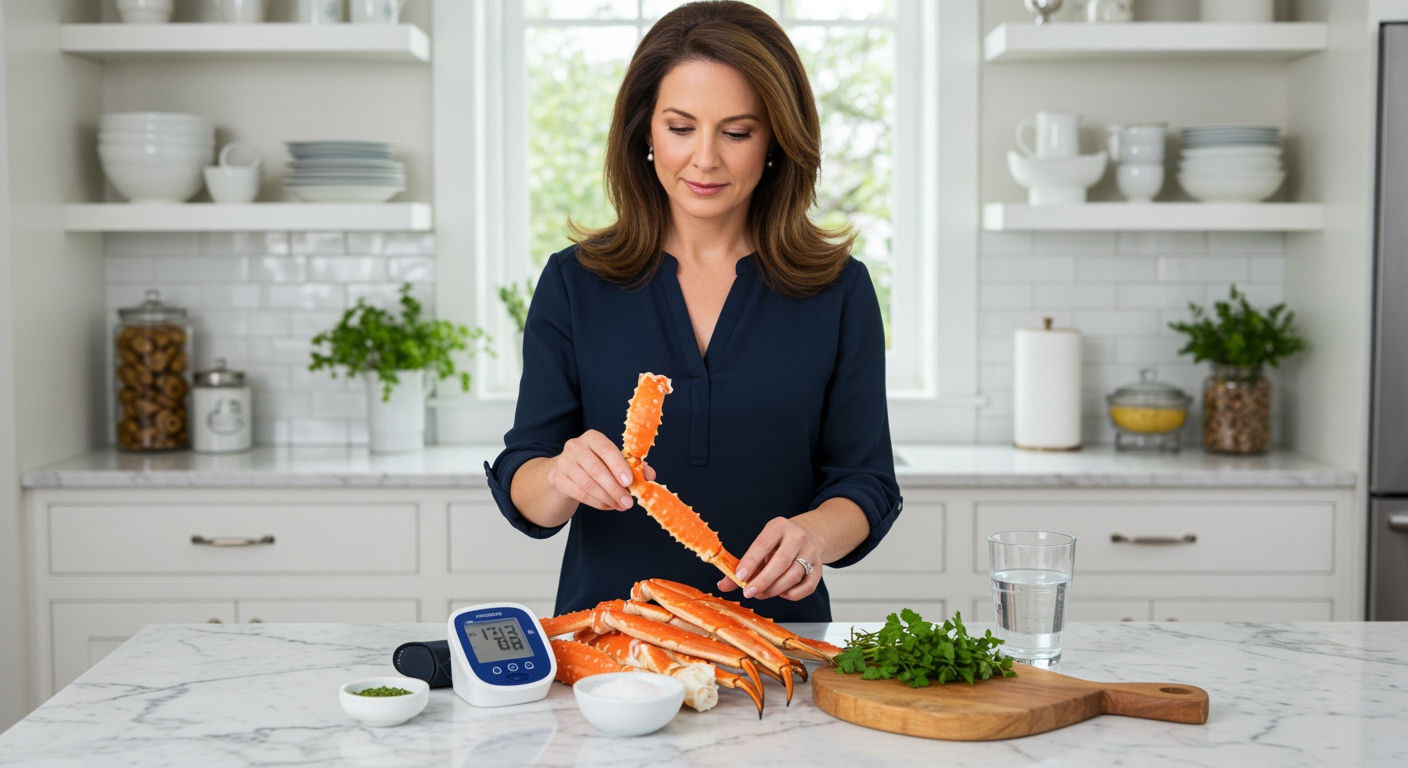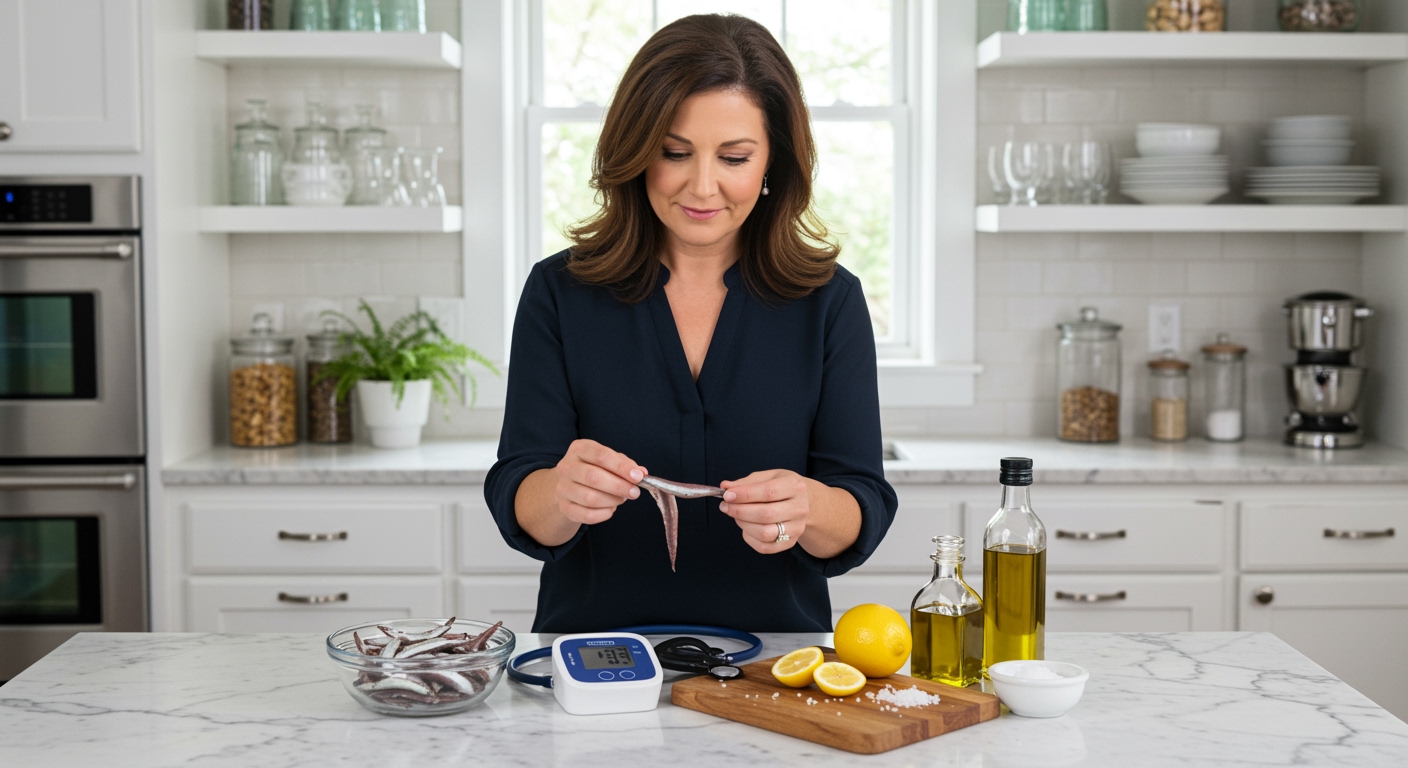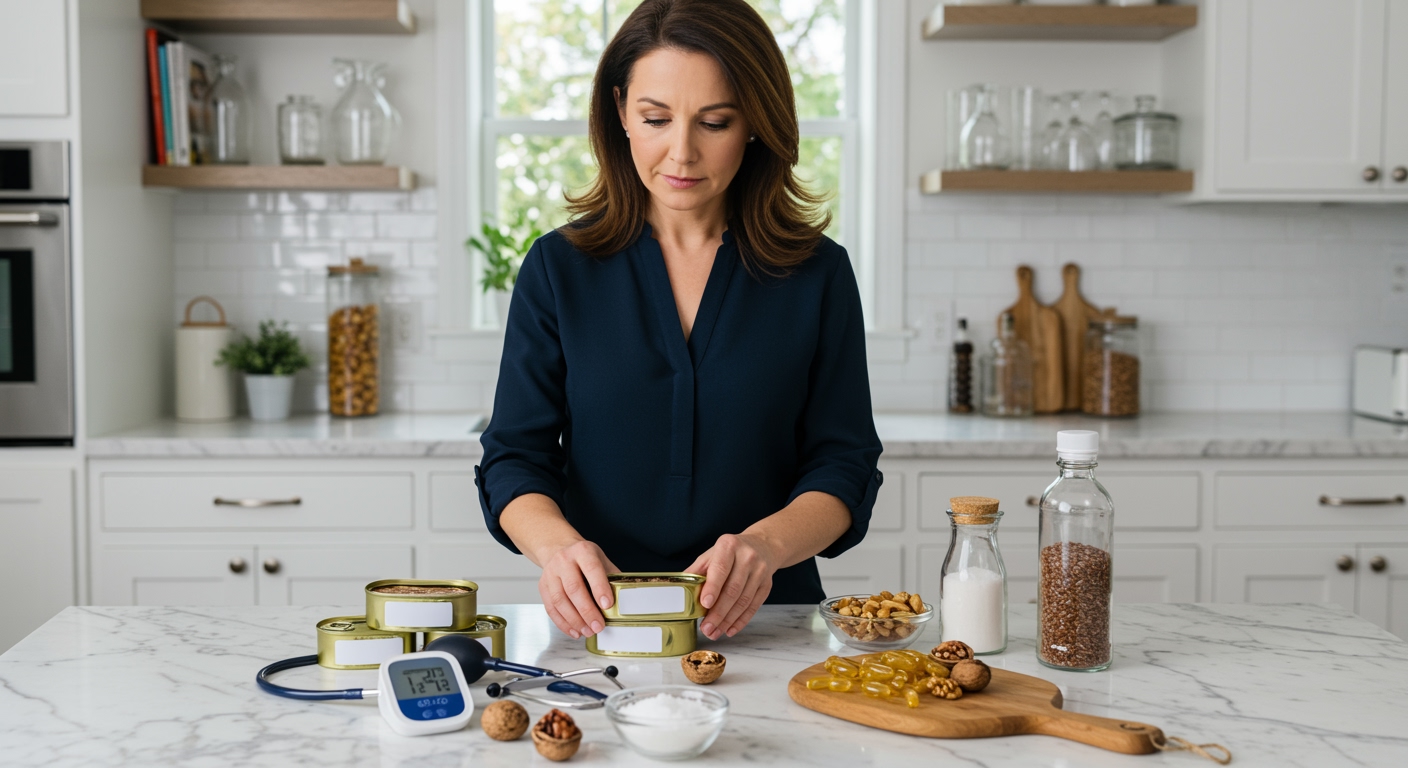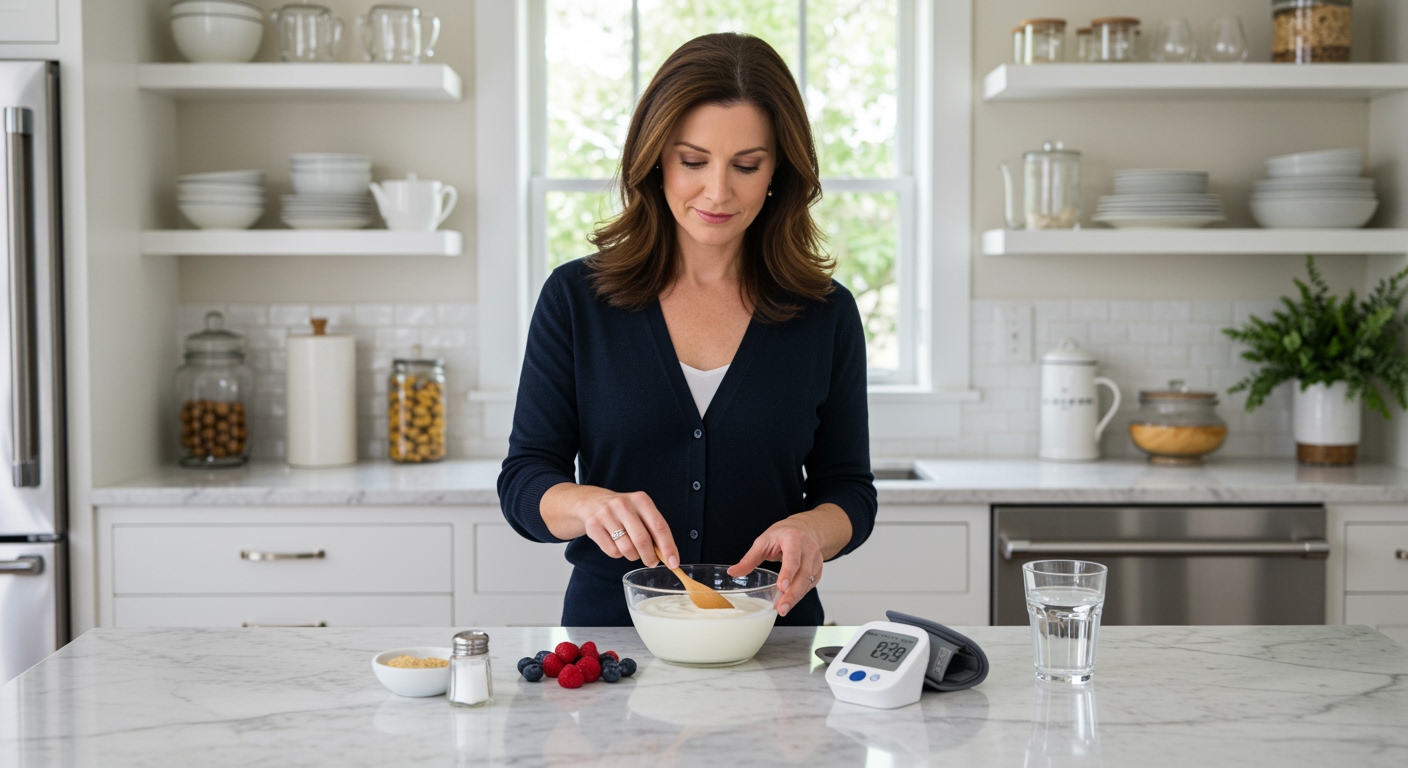✪ Key Takeaway: Crab contains sodium but also provides potassium and magnesium that help regulate blood pressure naturally.
Introduction
You love crab but worry it might spike your blood pressure through the roof.
This concern makes perfect sense because many people with low blood pressure wonder if certain foods can help raise their numbers to healthier levels.
Hi, I’m Abdur, your nutrition coach and today I’m going to explain exactly how crab affects your blood pressure and whether it can actually help people with hypotension.
What Makes Crab Different From Other Seafood?
Crab stands out from other seafood because of its unique mineral profile that directly impacts blood pressure regulation.
A 3-ounce serving of crab contains about 237 milligrams of sodium, which is moderate compared to processed foods but higher than most fresh fish.
However, the same serving also provides 275 milligrams of potassium and significant amounts of magnesium.
These minerals work together in your body to maintain proper fluid balance and support healthy blood vessel function.
The sodium-potassium ratio in crab is actually more balanced than many people realize, making it different from high-sodium processed foods that lack these beneficial minerals.
✪ Fact: Fresh crab contains natural sodium that comes with beneficial minerals, unlike processed foods with added salt.
How Does Sodium In Crab Affect Blood Pressure?
The sodium in crab can have a mild blood pressure raising effect, but the impact depends on several important factors.
Your kidneys regulate blood pressure by controlling how much sodium and water your body retains.
When you eat sodium, your body holds onto more water to maintain proper concentration levels in your bloodstream.
This increased blood volume puts more pressure on your arterial walls, which can raise your blood pressure readings.
However, people with low blood pressure often have different sodium sensitivity compared to those with normal or high blood pressure.
For individuals with hypotension, the moderate sodium content in crab might actually help bring their blood pressure closer to normal ranges rather than causing dangerous spikes.
✪ Pro Tip: Monitor your blood pressure before and after eating crab to understand your individual response.
What Role Do Other Minerals Play?
The potassium and magnesium in crab work as natural blood pressure regulators that balance out the sodium effects.
Potassium helps your kidneys excrete excess sodium through urine, which prevents your body from retaining too much fluid.
This mineral also helps relax blood vessel walls, making it easier for blood to flow through your arteries with less pressure.
Magnesium supports this process by acting as a natural calcium channel blocker, which prevents excessive muscle contraction in your blood vessels.
When your blood vessels stay more relaxed, your heart does not need to work as hard to pump blood throughout your body.
These protective minerals in crab help explain why whole foods with natural sodium often have different effects than processed foods with added salt.
✪ Note: The mineral balance in crab provides natural blood pressure regulation that processed foods cannot match.
Can Crab Help People With Low Blood Pressure?
Crab can be a helpful food choice for people with low blood pressure because it provides controlled amounts of sodium along with supportive nutrients.
People with hypotension often benefit from slightly higher sodium intake compared to those with normal blood pressure.
The moderate sodium content in crab can help increase blood volume and improve circulation without causing dangerous spikes.
Additionally, crab provides high-quality protein that supports overall cardiovascular health and helps maintain stable blood sugar levels.
Stable blood sugar prevents the blood pressure drops that some people experience after meals with refined carbohydrates.
The combination of protein, healthy minerals, and moderate sodium makes crab a smart choice for people trying to raise their blood pressure naturally.
✪ Pro Tip: Pair crab with complex carbohydrates to maintain steady blood pressure throughout the day.
What About Preparation Methods?
How you prepare crab makes a significant difference in its blood pressure effects.
Steamed or boiled crab without added salt provides the most natural mineral balance for blood pressure management.
Adding extra salt, butter, or high-sodium sauces can dramatically increase the sodium content and potentially cause unwanted blood pressure spikes.
Crab cakes and other processed crab products often contain added sodium from breadcrumbs, seasonings, and preservatives.
These preparations can provide much more sodium than fresh crab alone, which changes the mineral balance and blood pressure effects.
For the best blood pressure benefits, choose fresh crab prepared with herbs, lemon, and minimal added salt.
✪ Fact: Fresh crab has about 75% less sodium than most canned crab products.
The Bottom Line
Crab can help raise blood pressure slightly due to its natural sodium content, but the effect is moderated by beneficial minerals like potassium and magnesium.
Smart food choices work better than extreme restrictions when managing blood pressure naturally.
I would love to hear about your experiences with crab and blood pressure in the comments below, and please share any questions you might have about incorporating seafood into your diet.
References
At NutritionCrown, we use quality and credible sources to ensure our content is accurate and trustworthy. Below are the sources referenced in creating this article:
- Pier Market: The Complete Guide to Crab Nutritional Value
- American College of Cardiology: Seafood and Cardiovascular Health
- PMC: Dietary Sodium and Cardiovascular Health
- PMC: Minerals and Blood Pressure Regulation





